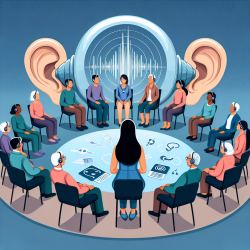In the field of speech-language pathology, the assessment and identification of children with language disorders at an early age are crucial for timely intervention and support. A recent research review titled "Assessment, Diagnosis, and Recovery From Language Disorder at Kindergarten Age: Research Review and Clinical Discussion" sheds light on the complex trajectories of language disorders and offers valuable insights for practitioners.
The study explores the phenomenon of "illusory recovery," where children with early-identified language disorders appear to have caught up with their peers by kindergarten age, only to face renewed challenges later in their academic journey. This blog will highlight key findings from the research and discuss practical implications for speech-language pathologists working with young children.
Key Findings
- Trajectories of Language Disorders: The research reveals that while some children with language disorders show significant improvement by kindergarten age, others continue to experience language difficulties into their school years and beyond.
- Illusory Recovery: Periods of plateau in typical language development may give the false impression that children with language disorders have caught up with their peers, leading to premature discontinuation of support services.
- Predictors of Persistent Difficulties: Children with broader language difficulties or those with impairments in receptive language are less likely to show sustained recovery.
Clinical Implications
Given the findings of the study, practitioners should approach assessments and diagnostic decisions with caution, particularly when considering discontinuing support for children who appear to have resolved their language issues. Here are some evidence-based recommendations:
- Monitor Progress: Continue to monitor children with a history of language disorders, even if they show age-appropriate abilities at kindergarten age. This ensures that any re-emerging difficulties are identified and addressed promptly.
- Use Sensitive Measures: Employ assessment tools and measures that are sensitive to ongoing language challenges, such as narrative tasks, complex sentence structures, and grammatical morphemes. These measures can help identify subtle language difficulties that may not be apparent in simpler assessments.
- Consider Functional Observations: Test scores should be interpreted alongside functional observations of the child's language use in everyday contexts. This holistic approach provides a more comprehensive understanding of the child's language abilities and needs.
Encouraging Further Research
While the current study provides valuable insights, more research is needed to fully understand the trajectories of language disorders and the phenomenon of illusory recovery. Practitioners are encouraged to stay informed about emerging research and incorporate new findings into their clinical practice.
To read the original research paper, please follow this link: Assessment, Diagnosis, and Recovery From Language Disorder at Kindergarten Age: Research Review and Clinical Discussion.










